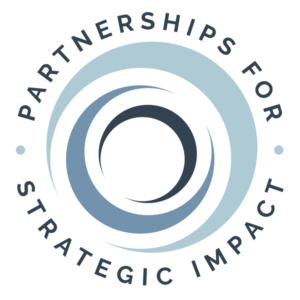
Why Benchmarking Doesn’t Work
Context is WAY MORE Important
February 27, 2024
Maryfrances Porter
Let’s Define Benchmarking
In the for-profit world, benchmarking success includes comparing current business performance to that of competitors or industry leaders (external benchmarking) and/or it may be comparing current performance to past performance (internal benchmarking).
Some benchmarking metrics have to do with productivity (i.e., average wait times, injuries on the job, call lengths, sales made, length of time to market).
Some benchmarking metrics have to do with profitability (i.e., profit, revenue growth, stock value, market share, customer satisfaction).
Why Benchmarking is Tricky in the Social Sector
Benchmarking in the social sector is tricky because – while more productivity (i.e., serving more people) and more impact (i.e., more goodness in the world) are both desirable in the abstract – that’s not always the case!
In the social sector more is not necessarily better. In fact, many nonprofits would like to generate so much good that they put themselves out of business. Some nonprofits are providing excellent services in for a small area and have no need to grow.
In the social sector efficiency is often not the goal. Building trust is often critical before someone is open to change – there is not a timetable for that. When working with people – in their complex and ever-changing lives – a priority last week might not be the priority this week. On the way to helping someone reach a goal, it might become apparent that there’s something else needs to be completed first.
What This Means
External benchmarking can be unlikely to be useful. What’s being done by one nonprofit in one community might be completely different than what another nonprofit’s doing in another community – even if both are focused on job placement.
Internal benchmarking is necessary, so leaders can understand how things change over time. But – especially in smaller organizations – internal performance can vary due to either changes in the community or staff.
Context is Key!
Two things are needed to understand the success in the social sector.
First, social sector leaders should 100% prioritize collecting data that lets them know how much work has been done (productivity) and how much goodness people received as a result (impact). Read more about KPIs in this blog post.
Second, each nonprofit needs a Learning and Insight Team which looks at the data, ideally quarterly. The Team looks at current data and compares it to past data.
A Team with diverse expertise and knowledge is able to put the data in context. They are able to understand what the data is saying on the surface. Then they are able to dig deep to build knowledge about what happened.
Here’s an Example
Let’s say your Learning and Insight Team is looking at impact graphs and can see that a smaller percentage of people have been getting placed in jobs each month for about six months. Bad news right? Of course – more people in jobs is good, fewer in jobs is bad.
But does this mean the nonprofit is less successful?
When the Team members put their heads together, here’s the context they discover:
- Staff aren’t doing anything different, and in fact, they are working harder.
- The number of people being served has been climbing.
- The biggest employer in the community is closing its doors and people have been being laid off as they wind down.
- The Executive Director is participating on a new regional task force working to bring more business to the area to reduce unemployment.
- A new program for retraining people for high demand jobs has is about to start.
The nonprofit is actually doing great work and being very successful, despite what might look like disappointing data! They are on top of the changing community need, shifting what they do, and they are collaborating to better meet that need.
I’m so grateful for you. Thank you for all you do!
– Maryfrances
Your ImpactStory™ Coach
Learn more in the ImpactStory Academy!
Partnerships for Strategic Impact®
 At Partnerships for Strategic Impact®, I have all the tools to build out the structures and strategies you need for tracking and using impact. I train social sector staff in how to use these tools, in how to analyze data, in how to make action steps for change, and how to tell powerful impact stories. My goal is your sustainability: I provide just the right amount of coaching and ongoing support to ensure success.
At Partnerships for Strategic Impact®, I have all the tools to build out the structures and strategies you need for tracking and using impact. I train social sector staff in how to use these tools, in how to analyze data, in how to make action steps for change, and how to tell powerful impact stories. My goal is your sustainability: I provide just the right amount of coaching and ongoing support to ensure success.
This is within reach. It’s not harder than managing your budget. Plus, you, your funders, and the people you serve deserve to know more about the value your organization delivers.
If you’re reading this, then you’re already part of my network. Schedule some time on my calendar. There’s no sales pitch and no obligation. Just curiosity and answering your questions. I am the seasoned program-evaluation, program-development, data-storytelling partner you need, right in your back pocket. I am here to bring order to the process of figuring out how to track and use your impact story.
– Maryfrances
Your ImpactStory™ Coach
Want even more?
Check out my Blogs and Videos
Check out the Resource Library
Follow me on all the places #ImpactStoryCoaching and @impactstorycoaching
![]()
![]()
![]()
![]()
![]()

